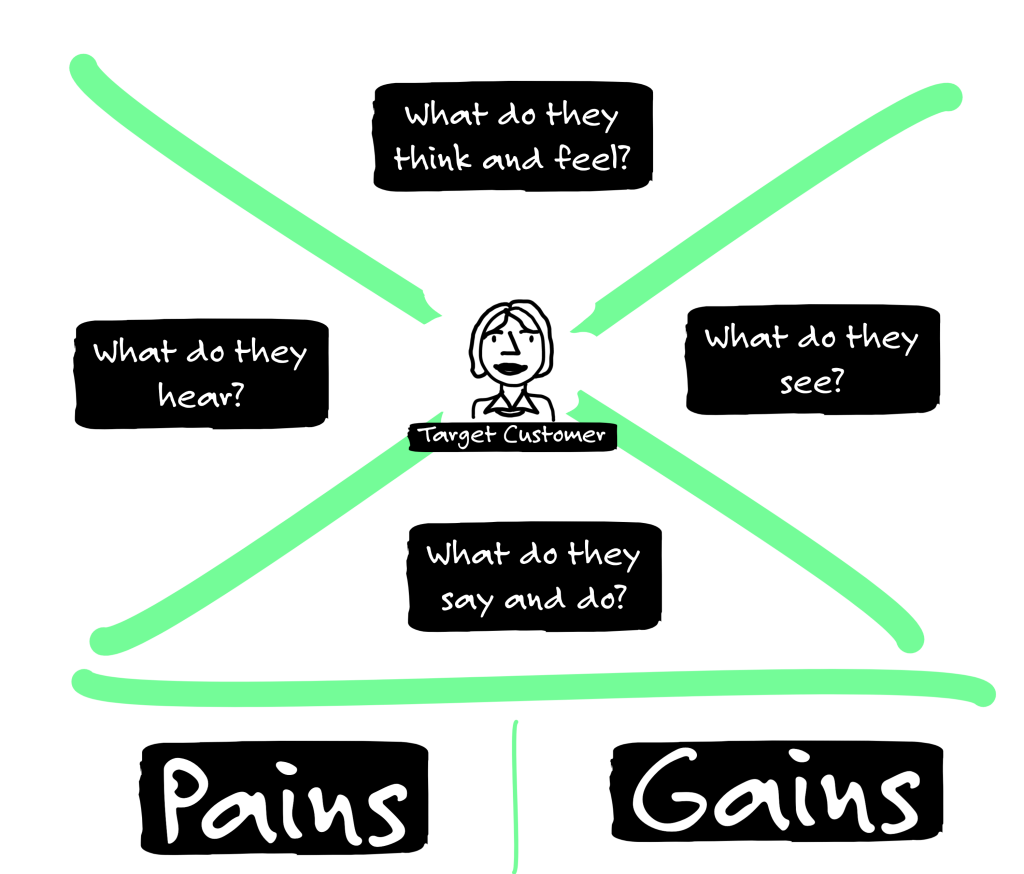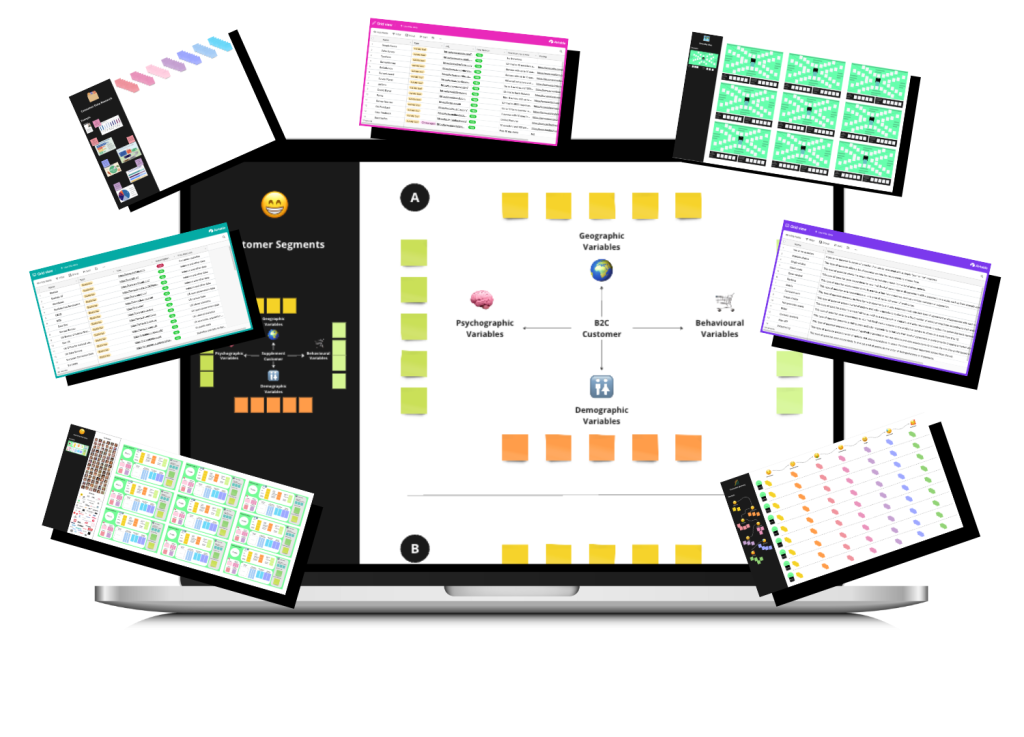💡 What is a Customer Analysis?
A Customer Exploration is a comprehensive approach designed to help you understand and analyze your target customers in detail. The process involves defining your target customer segments, studying customer behavior, preferences, and needs, and creating detailed customer personas, empathy maps, and customer journeys.
🚀 Why an In Depth Customer Analysis Important?
Understanding your customers is crucial, as it enables you to create tailored products and services, build a positive customer experience, and make informed decisions regarding product development, marketing, and sales. An in-depth customer exploration will help you to achieve:
- Tailored Products and Services: Gain insights to create products and services aligned with customer preferences.
- Effective Marketing Strategies: Develop targeted marketing campaigns based on customer behavior and interests.
- Improved Customer Experience: Build an overall customer experience that resonates with your target audience.
- Market Trends Identification: Identify patterns and trends in customer behavior, staying ahead of market changes.
🗒️ Customer Analysis Step-by-step
Ready to deep-dive into understanding your customers? This step-by-step guide is your compass, navigating through customer segments definition, data research, persona creation, empathy mapping, and decoding the customer journey. Whether you’re kickstarting a new venture or fine-tuning an existing one, this customer deep dive is your sidekick, helping you connect the dots between your business and your customers’ world. Let’s kick off this journey into customer-centricity.
✅ Step A: Target Segments
- Identify Customer Segments: Define whether your focus is B2B, B2C, or both. Clearly outline the specific customer segments your products or services aim to serve. This fundamental decision guides the subsequent steps.
- Define your Segmentation Variables: Delve into geographic factors, demographics, behaviors, and psychographics. Consider the specifics of your industry and product offerings. These variables help refine your understanding of the target audience.

✅ Step B: Customer Data Research
- Analyze Existing Data: Scrutinize any available customer data (in case you have any). Evaluate demographics, past purchases, and feedback. This analysis provides a starting point for understanding customer characteristics and preferences.
- Conduct External Research: Conduct thorough online searches for consumer statistics related to your sector. Explore public data sets and statistics providers to supplement your existing data. This external research enriches your insights.
✅ Step C: Customer Personas
- Create your Customer Personas: Imagine your ideal customer(s) and construct detailed personas. Describe your ideal customers in detail incorporating demographics, interests, values, and behaviors. Personas humanize your target audience, aiding in personalized product development and marketing.
- Personalize your personas: Select or generate fictional photos for each persona, adding a relatable face. Assign names to these personas. This personalization enhances the understanding of your target audience, making strategic decisions more tangible.
✅ Step D: Empathy Map
- Create an Empathy Map for Each Persona: Create empathy maps for each customer persona, exploring their thoughts, feelings, actions, and surroundings. This exercise deepens your understanding of customer perspectives, enhancing empathy and informed decision-making.

✅ Step E: Customer Journey
- Define Customer Touchpoints: Identify critical touchpoints in the customer journey, encompassing interactions from initial awareness to final engagement. Recognize website visits, social media engagement, and product usage as key touchpoints.
- Identify the Actions and Pain/Gain Points: Describe the actions customers take at each touchpoint. Outline both pain points and gains experienced throughout the customer journey. This step reveals areas for improvement and highlights successful aspects.

✅ Step E: Market Research (Optional)
- Define your Survey Objectives: Clearly articulate the goals and objectives of the survey. Define the information needed, whether demographic, attitudinal, or behavioral. This ensures the survey’s focus aligns with strategic business goals.
- Develop your Survey Questions: Craft a concise and focused list of survey questions. Provide diverse response options to gather nuanced feedback. The questions should align with the survey’s objectives, ensuring relevance.
- Distribute your Survey: Choose an online survey tool like Google Forms. Distribute the survey to a representative sample of your target audience. Utilize various channels, including social media, email, and personal networks, for wider participation.
- Collect and Analyze the Data: Collect survey responses and export data for analysis. Employ descriptive statistics, cross-tabulation, or other suitable methods. Analyze both stand-alone and interconnected responses to draw meaningful conclusions.
- Follow-Up with Respondents: Share the planned actions based on the survey responses. This follow-up demonstrates a commitment to incorporating customer feedback into business decisions.
In conclusion a thorough Customer Analysis equips you with valuable insights, empowering you to create customer-centric strategies. By understanding your target customers at a deep level, you can build products, services, and experiences that resonate with your audience, setting the stage for business success.

Get Ready-to-Use Templates and Practical Guidances . 🚀
Check out our basecamp for founders for practical guidance and templates on Market Environment Analysis and many more business building methodologies.

